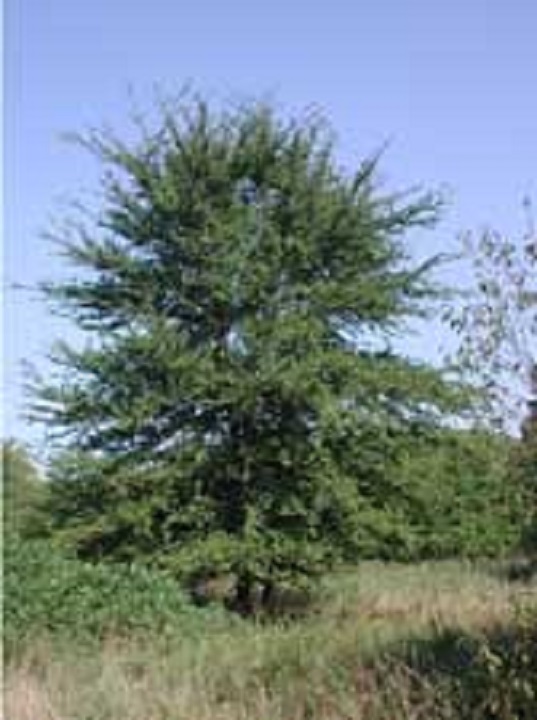Most Common Trees in Middle Tennessee
by siteadmin

Tennessee is one large forest, yet different regions boast unique species of trees. Mississippi Gulf Coast Plain and Nashville Basin regions host wetland plants such as bald cypress which thrive here.
Hemlock trees typically flourish in eastern Tennessee and are evergreen trees with green leaves all year. Additionally, their branches produce tangles of twisty branches at their ends that produce an impressive array of twisting twigs.
Hemlock
Hemlocks provide dense shade to forests and streams in eastern Tennessee. Hemlocks are an invaluable and distinctive component of the Great Smoky Mountains ecosystems, inhabiting their own ecosystems which differ from hardwood forests. Hemlocks produce unique, short-lived pine needles with green soft needles which last only briefly before falling off; their woody cones contain both male and female flowers for pollination purposes.
Landscapers love Hemlock trees for both specimen and group plantings, yet it requires special care to thrive. When transplanting Hemlocks, dig a hole two to three times larger than its root ball and when planting spread a 2- to 4-inch layer of peat moss or sand over the soil before tilling to increase porosity before watering frequently and thoroughly to avoid root rot and maintain moist conditions in their new homes.
Locust
Locust trees make an eye-catching statement in lawns and large gardens alike, while adding an exotic element. Bristly locusts feature attractive pods while shademaster honeylocusts are an excellent low-maintenance choice that fits both modern and traditional settings seamlessly.
Locust can tolerate dry conditions but performs best in moist soils composed of clay, loam or sand. Its ideal location lies somewhere with pH levels between neutral to acidic; planting should occur between October and April for best results.
Black locust trees do not fare well against taller, faster-growing conifers in open forests; however, they often establish themselves on spoil banks or clearcuts. Root borer can damage them severely; while witches' broom may attack as well.
White Pine
This tree can become quite tall and wide over time. It boasts a pyramidal form with soft gray-green foliage. Branches extend horizontally in whorls that overlap, widening as they age. Bark can range from thin and smooth as young trees to thick and deeply furrowed as mature specimens become exposed; being susceptible to pests and diseases including white pine blister rust.
Evergreen trees make ideal privacy screens, requiring little in the way of maintenance while growing at a reasonable pace. Prefers full sunlight or partial shade with well-draining soil conditions – ensure regular watering until established & trimming every two or three years to maintain peak health! They are less vulnerable to environmental stresses than some evergreen species such as fir.
Liriodendron tulipifera
Liriodendron tulipifera, commonly referred to as the Tulip Tree or Yellow Poplar or Tulip Magnolia is a deciduous softwood which does not closely resemble true lilies or tulips and falls within Magnoliaceae or magnolia family.
This fast-growing tree needs plenty of room in your landscape. While typically pest-free, poplar trees may still be subject to canker diseases and Byctiscus populi leaf-rolling weevil attacks.
This tree prefers full sunlight and well-drained soil. It can adapt to various pH levels of soil, making it relatively drought tolerant; it does well in rich, moist to slightly acidic soils with high organic content, however. Water requirements tend to decrease once planted or young. Unfortunately these trees are very susceptible to breakage from high winds and exposure to ice or snow and require regular pruning in order to remain strong and durable.
Winged Elm
Ulmus alata, commonly referred to as Corked Elm or Wahoo Elm is a deciduous tree native to woodlands of southern United States and easily identified by its pair of opposite, corky wings which protrude on branches and small limbs – these wings may measure one half inch wide giving this species its name.
This tree can handle wet conditions and ponding environments well; however, its shade tolerance ranks low compared to other North American elm species. It produces inconspicuous brownish-green flowers which produce single-seeded, wafer-like samaras in late winter to early spring prior to leaves emerging.
This species requires regular pruning to promote strong and healthy growth while eliminating dead limbs. Pruning should take place during late winter in order to thin branches and improve crown shape.
Tree Facts presented by Franklin TN Tree Care. https://www.treecarefranklintn.com/contact-us.html
For Franklin TN tree service or tree service Brentwood TN contact Franklin TN Tree Care. We ae the premiere tree service in the Franklin TN area.
Tennessee is one large forest, yet different regions boast unique species of trees. Mississippi Gulf Coast Plain and Nashville Basin regions host wetland plants such as bald cypress which thrive here. Hemlock trees typically flourish in eastern Tennessee and are evergreen trees with green leaves all year. Additionally, their branches produce tangles of twisty branches…
Recent Posts
- Affordable Fencing Solutions: Fence Company Rochester NY Offers Insight on the Cheapest Fence Installations in Rochester, NY
- Expert Roofers Columbus Shares Insights on the Roofing Installation Process in Columbus, GA
- Sons of Monaco Painting Unveils the Ultimate Solution: Roll vs. Spray for Exterior Paint
- Stokes Tree Solutions Introduces Best Safety Practices for Tree Trimming in Fairfax, VA
- Stokes Tree Solutions Introduces Best Safety Practices for Tree Trimming in Fairfax, VA
